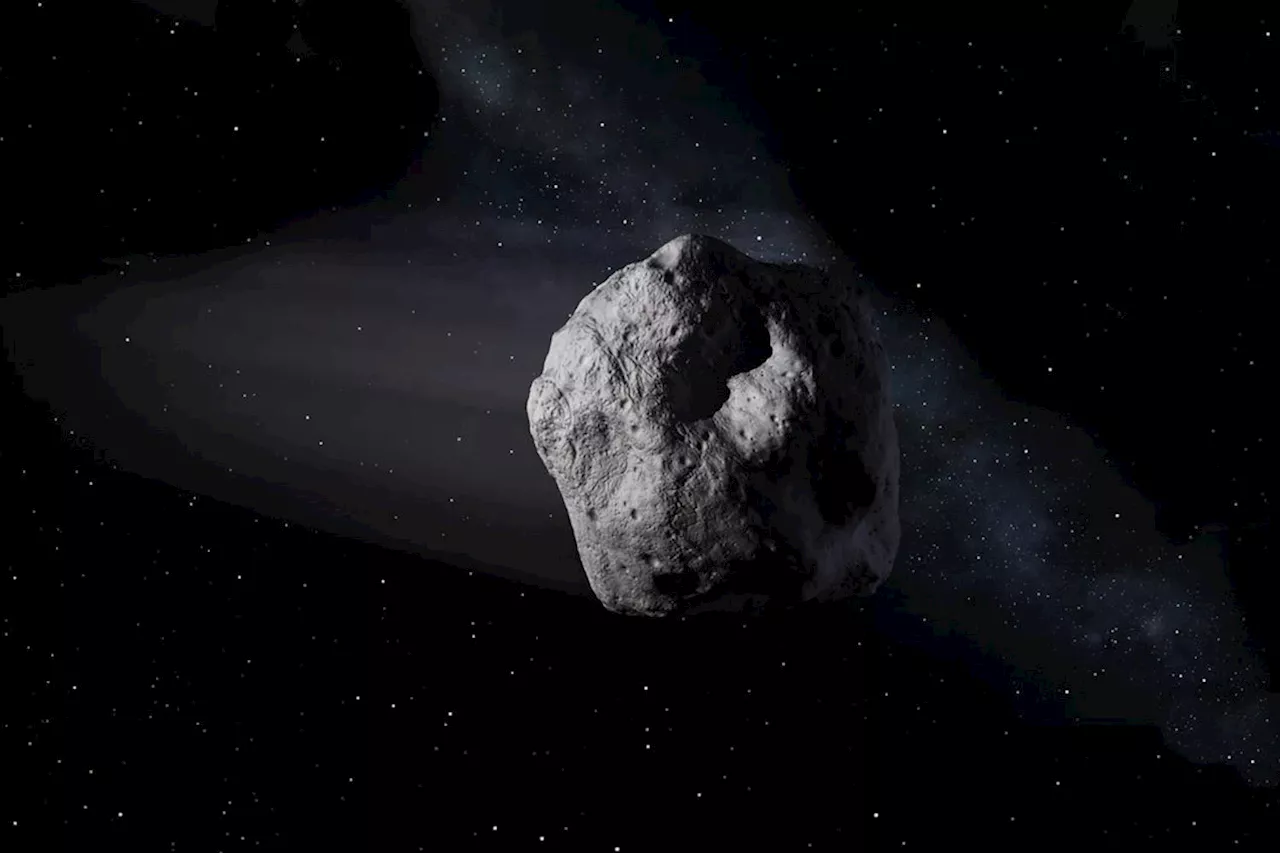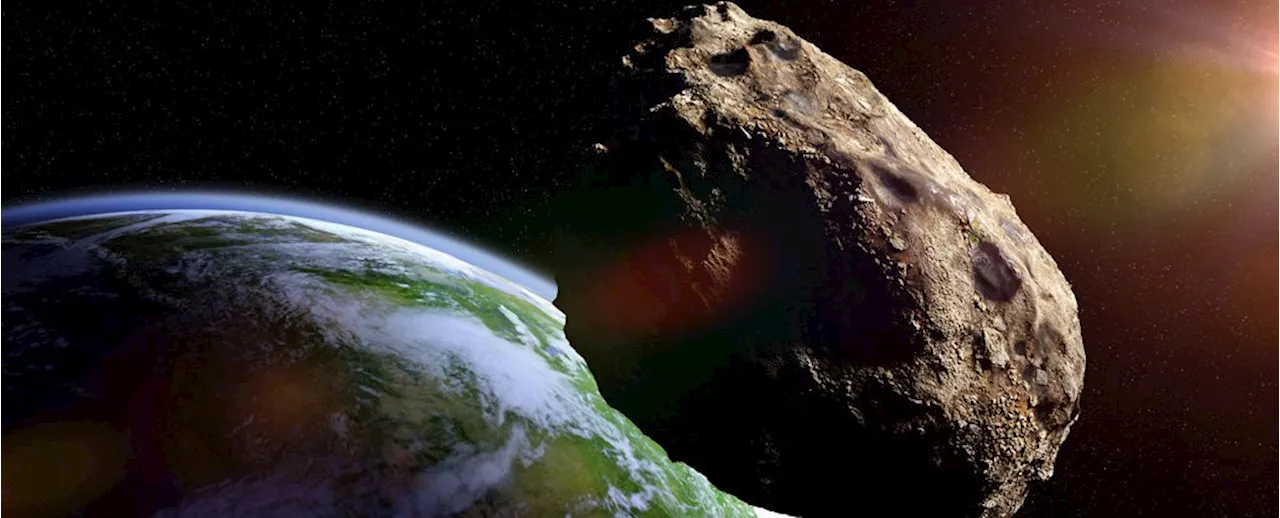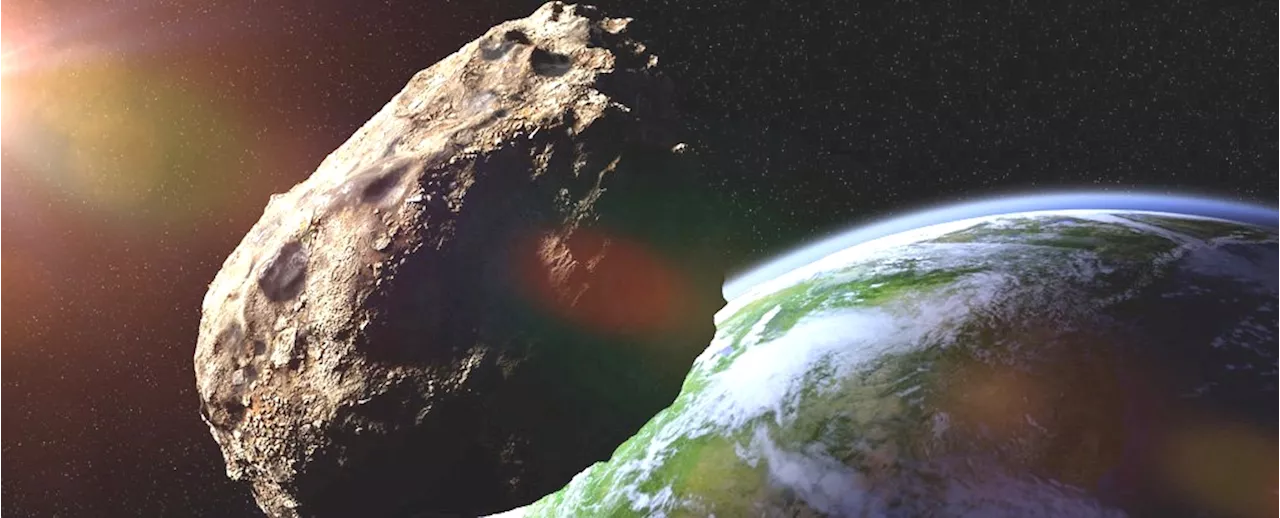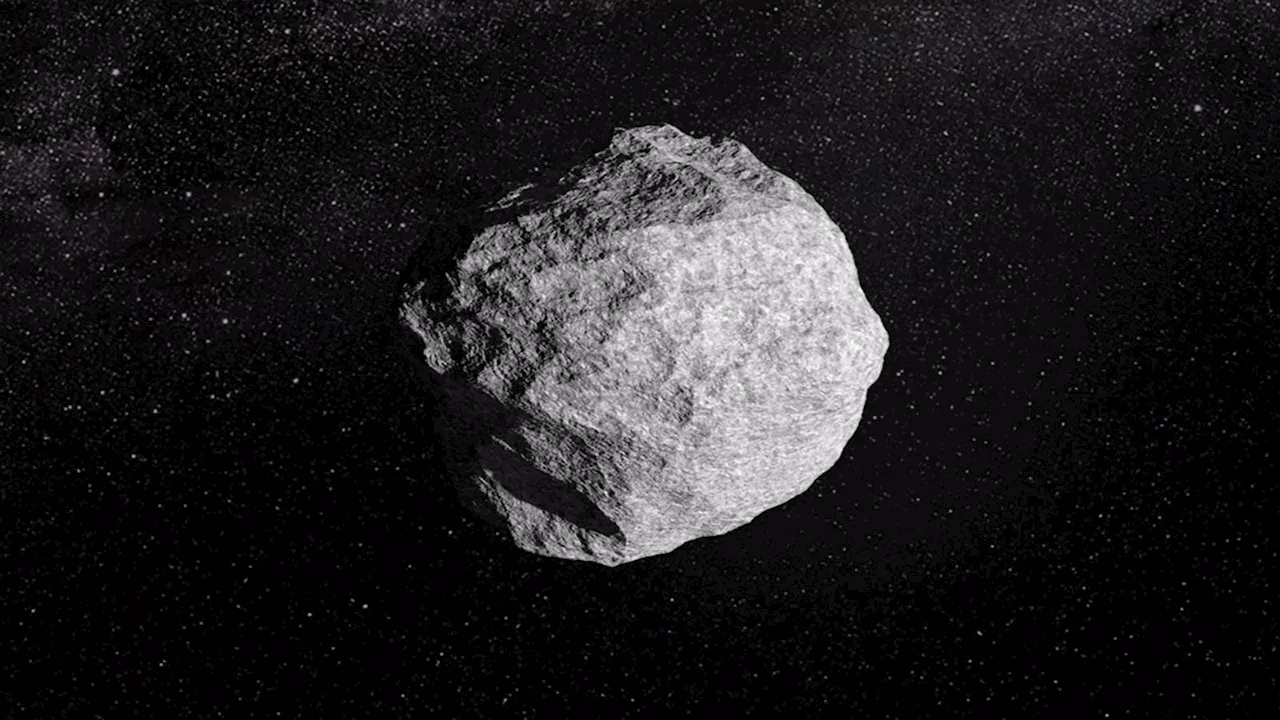A recently discovered asteroid, 2024 YR4, now has a 2.2% chance of hitting Earth on December 22, 2032, according to the European Space Agency. While the risk assessment has increased, astronomers remain optimistic that it will be a flyby, not an impact.
Astronomers have detected fast-repeating radio bursts from a distant 'dead' galaxy that should not contain the energy to produce these types of signals. A recently discovered asteroid that has captured the attention of the astronomy community now has a slightly increased risk of affecting Earth. Named 2024 YR4, the asteroid has a 2.2% chance of hitting our planet on December 22, 2032, according to the European Space Agency. The risk assessment has increased from a chance of 1.
2% over the last week due to new observations.Astronomers expect the percentage to evolve as more observations are shared. If this asteroid follows the pattern of other near-Earth asteroids after their discovery, the chances of impact will rise and then fall, according to the agency. For example, the asteroid Apophis was once considered one of the most hazardous asteroids, with the potential to strike Earth after its discovery in 2004. In 2021, scientists revised that opinion after a precise analysis of the asteroid's orbit. The more astronomers can observe asteroid 2024 YR4, the more they can refine their understanding of its size and trajectory, which will determine the likelihood of an impact. 'Basically, the more observations we get, the more we can localize and confirm the asteroid's trajectory, which is most likely to turn out to be a flyby, and not an impact,' according to a blog post the agency shared. 'Hence, we expect the risk forecast can be steadily/stepwise reduced to zero.'The space rock has a 'size range comparable to that of a large building,' said Dr. Paul Chodas, manager for the Center for Near Earth Object Studies, or CNEOS, at NASA's Jet Propulsion Laboratory in Pasadena, California. Chodas added that the size of the asteroid, which astronomers are trying to determine with follow-up observations using multiple telescopes, is currently highly uncertain. 'If the asteroid turns out to be on the large end of its estimated size range, the impact could produce blast damage as far as 50 kilometers (31 miles) from the impact site,' Chodas said. 'But that's in the unlikely event that it might impact at all. The potential for damage arises because of the incredibly high speed (about 17 kilometers per second, or 38,028 miles per hour) at which the asteroid would enter the atmosphere.' Asteroids of this size have an impact on Earth every few thousand years, and they can cause severe damage to local regions, according to the ESA. In 1908, a 30-meter-wide (98-foot-wide) asteroid struck the Podkamennaya Tunguska River in a remote Siberian forest of Russia, according to the Planetary Society. The event leveled trees and destroyed forests across 830 square miles (2,150 square kilometers). And in 2013, a 20-meter-wide (66-foot-wide) asteroid entered Earth's atmosphere over Chelyabinsk, Russia. It exploded in the air, releasing 20 to 30 times more energy than that of the first atomic bomb, generating brightness greater than the sun, exuding heat, damaging more than 7,000 buildings and injuring more than 1,000 people.The Asteroid Terrestrial-impact Last Alert System, or ATLAS, telescope in Rio Hurtado, Chile, first spied 2024 YR4 on December 27. The telescope is one of the asteroid discovery programs funded by NASA to scan the sky in search of near-Earth asteroids, said Davide Farnocchia, navigation engineer at JPL and CNEOS, via email. Automated asteroid warning systems sent out an alarm after determining the asteroid had a slim chance of affecting Earth in 2032, bumping it to the top of the ESA's asteroid risk list and NASA's automated Sentry risk list on December 31. Such lists include any known asteroids with a nonzero probability of colliding with Earth. Since early January, astronomers have used the Magdalena Ridge Observatory in New Mexico, the Danish Telescope and the Very Large Telescope in Chile to track the asteroid, which is currently more than 28 million miles (45 million kilometers) from Earth and moving farther away over time, Farnocchia said. As the asteroid moves away from Earth and becomes fainter, researchers will have to rely on larger telescopes to observe it. The celestial object should be visible through early April and disappear as it continues on its orbit around the sun. It won't return to Earth's vicinity until 2028, Farnocchia said. If 2024 YR4 disappears from view before space agencies can entirely rule out any chance of impact, the space rock will remain on the risk list until it's back in view in June 2028. 'Using the available tracking data, we can predict the future position of an asteroid,' Farnocchia said. 'The longer we track an asteroid, the more precise the prediction. As we collect additional data, the uncertainty in the position of 2024 YR4 in 2032 will decrease.' NASA and the ESA regularly track thousands of near-Earth asteroids, but depending on the size, the space rocks are not always easy to spot
Asteroid 2024 YR4 Earth Impact Near-Earth Asteroid Space Agencies Scientific Observation Risk Assessment Astronomy
United States Latest News, United States Headlines
Similar News:You can also read news stories similar to this one that we have collected from other news sources.
 Newly Discovered Asteroid 2024 YR4 Poses Potential Threat to EarthA recently discovered asteroid, 2024 YR4, has a small but significant chance of colliding with Earth in 2032. While the probability is currently estimated at 1.2%, scientists are closely monitoring its trajectory and refining impact predictions.
Newly Discovered Asteroid 2024 YR4 Poses Potential Threat to EarthA recently discovered asteroid, 2024 YR4, has a small but significant chance of colliding with Earth in 2032. While the probability is currently estimated at 1.2%, scientists are closely monitoring its trajectory and refining impact predictions.
Read more »
 Asteroid 2024 YR4: Potential Threat to Earth in 2032A recently discovered asteroid, 2024 YR4, poses a potential threat of colliding with Earth in 2032. While a global impact is unlikely, the asteroid could cause significant damage upon impact. NASA is monitoring the asteroid's trajectory closely.
Asteroid 2024 YR4: Potential Threat to Earth in 2032A recently discovered asteroid, 2024 YR4, poses a potential threat of colliding with Earth in 2032. While a global impact is unlikely, the asteroid could cause significant damage upon impact. NASA is monitoring the asteroid's trajectory closely.
Read more »
 Potentially Dangerous Asteroid 2024 YR4 Heads Towards EarthA newly discovered asteroid, 2024 YR4, poses a slight but significant threat to Earth. While the probability of a direct impact in 2032 is low, its close approach warrants careful monitoring. Astronomers are closely tracking its trajectory to determine the true risk.
Potentially Dangerous Asteroid 2024 YR4 Heads Towards EarthA newly discovered asteroid, 2024 YR4, poses a slight but significant threat to Earth. While the probability of a direct impact in 2032 is low, its close approach warrants careful monitoring. Astronomers are closely tracking its trajectory to determine the true risk.
Read more »
 Asteroid 2024 YR4: 1 in 83 Chance of Hitting Earth in Next 8 YearsAn asteroid named 2024 YR4 has a small but real chance of impacting Earth within the next eight years, prompting international efforts to monitor its trajectory and prepare for potential mitigation strategies.
Asteroid 2024 YR4: 1 in 83 Chance of Hitting Earth in Next 8 YearsAn asteroid named 2024 YR4 has a small but real chance of impacting Earth within the next eight years, prompting international efforts to monitor its trajectory and prepare for potential mitigation strategies.
Read more »
 2024 YR4: Is This Asteroid on a Collision Course with Earth?Astronomers are closely monitoring asteroid 2024 YR4, which has a small but non-zero chance of colliding with Earth in December 2032.
2024 YR4: Is This Asteroid on a Collision Course with Earth?Astronomers are closely monitoring asteroid 2024 YR4, which has a small but non-zero chance of colliding with Earth in December 2032.
Read more »
 Near Earth Asteroid 2024 YR4 Has Slight Chance of Collision in 2032A newly detected asteroid, 2024 YR4, has a greater than one percent chance of colliding with Earth in about eight years. While scientists are not panicking, they are closely monitoring the object. A city-level devastation is possible depending on the impact site. Experts say there is still enough time to prepare and explore deflection strategies.
Near Earth Asteroid 2024 YR4 Has Slight Chance of Collision in 2032A newly detected asteroid, 2024 YR4, has a greater than one percent chance of colliding with Earth in about eight years. While scientists are not panicking, they are closely monitoring the object. A city-level devastation is possible depending on the impact site. Experts say there is still enough time to prepare and explore deflection strategies.
Read more »
